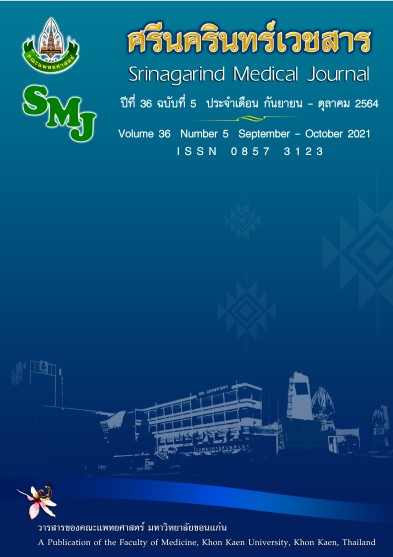Nursing Care for Prevention Complications of Patient with Spine and Spinal Cord Injuries in Rehabilitation Phase
Keywords:
Spinal cord injury; complication; Rehabilitation phase; nursing careAbstract
Spine and spinal cord injuries are serious condition and could disabilities. In developed countries, the estimated incidence were 10.4–130.6 cases per million people per year. Two-year survival following discharge from hospital with spinal cord injury tends to increase by 87 percent. The goals of early treatment in this group of patients are reduce mortality, reducing additional injuries of the spinal cord and prevention of complications. The goal of treatment in the rehabilitation phase is to facilitate the recovery of the spinal cord, including muscle strength and sensation as well as preventing complications such as respiratory infection and urinary tract, constipation, pressure ulcers and Deep Venous Thrombosis.
References
2. Hossain MS, Rahman MA, Herbert RD, Quadir MM, Bowden JL, Harvey LA. Two-year survival following discharge from hospital after spinal cord injury in Bangladesh. Spinal Cord 2016; 54(2): 132-136.
3. กิ่งแก้ว ปาจรีย์. ไขสันหลังบาดเจ็บ. กรุงเทพฯ: สำนักพิมพ์ศิริราช 2558.
4. Sweis R, Biller J. Systemic complications of spinal cord injury. Curr Neurol Neurosci Rep 2017; 17(1): 8.
5. Tzanos IA, Mavrogenis A, Gioti K, Papagelopoulos P, Panagiotopoulos E. Depressive mood in individuals with spinal cord injury (SCI) living in Greece. Spinal Cord 2018; 56(9): 883-889.
6. Ho C, Atchison K, Noonan VK, McKenzie N, Cadel L, Ganshorn H, et al. Models of Care Delivery from Rehabilitation to Community for Spinal Cord Injury: A Scoping Review. J Neurotrauma 2021; 38(6): 677-697.
7. Pattanakuhar S, Kammuang-Lue P, Kovindha A, Komaratat N, Mahachai R, Chotiyarnwong C. Is admission to an SCI specialized rehabilitation facility associated with better functional outcomes? Analysis of data from the Thai Spinal Cord Injury Registry. Spinal Cord 2019; 57(8): 684-691.
8. นภชนก สุขประเสริฐ. บทบาทของนักจิตวิทยาการปรึกษาในการฟื้นฟูทางจิตใจผู้ป่วยบาดเจ็บกระดูกสันหลังและครอบครัว. วารสารวิทยาลัยราชสุดาเพื่อการวิจัยและพัฒนาคนพิการ 2562; 15(2): 105-115.
9. Suphab Mueanchoo, Panatchaya Chuawon. Preparedness of Caregivers of Patients with Spinal Cord Injury. Journal of Phrapokklao Nursing College 2017; 28(1): 140-148.
10. Rattanasuk D, Khuwatsamrit K. Causal model of psychological empowerment among people with spinal cord injury in Thailand. Orthop Nurs 2021;40(3):136-143.
11. สถาบันสิรินธรเพื่อการฟื้นฟูสมรรถภาพทางการแพทย์แห่งชาติ. คู่มือการดูแลคนพิการบาดเจ็บ
ไขสันหลัง สำหรับผู้ป่วยบาดเจ็บไขสันหลัง อัมพาตแขนและขา (เตตราพลีเจีย). นนทบุรี: สหมิตรพริ้นติ้งแอนด์พับลิสชิ่ง; 2561.
12. กิ่งแก้ว ปาจรีย์. การฟื้นฟูระบบประสาททันยุค 2561. กรุงเทพฯ: ภาควิชาเวชศาสตร์ฟื้นฟู คณะแพทยศาสตร์ศิริราชพยาบาล มหาวิทยาลัยมหิดล; 2561.
13. สินธิป พัฒนะคูหา, ปรัชญพร คำเมืองลือ, สยาม ทองประเสริฐ, อภิชนา โฆวินทะ, อดิศักดิ์ ตันติวรวิทย์. การป้องกันภาวะลิ่มเลือดอุดหลอดเลือดดำสำหรับผู้ป่วยบาดเจ็บไขสันหลัง. เวชศาสตร์ฟื้นฟูสาร 2561; 28(1): 24-31.
14. ศูนย์สิรินธรเพื่อการฟื้นฟูสมรรถภาพทางการแพทย์แห่งชาติ. แนวปฏิบัติการพยาบาลผู้ป่วยบาดเจ็บ
ไขสันหลัง. นนทบุรี: สหมิตรพริ้นติ้งแอนด์พับลิสชิ่ง; 2555.
15. Linsenmeyer TA, Gibbs K, Solinsky R. Autonomic Dysreflexia After Spinal Cord Injury: Beyond the Basics. Curr Phys Med Rehabil Rep 2020:1-9.
16. ฝ่ายการพยาบาล โรงพยาบาลศิริราช. แนวปฏิบัติเพื่อป้องกันการเกิดแผลกดทับ (Siriraj Concurrent Trigger Tool :Modify Early Warning Sign for Pressure Injury Prevention). กรุงเทพฯ; 2559.
17. Alizadeh A, Dyck SM, Karimi-Abdolrezaee S. Traumatic spinal cord injury: an overview of pathophysiology, models and acute injury mechanisms. Front Neurol 2019;10:282.
18. Gomelsky A, Lemack G, Botero JC, Lee R, Myers J, Granitsiotis P, et al. Current and future international patterns of care of neurogenic bladder after spinal cord injury. World J Urol 2018;36(10):1613-9.
19. New PW. The evidence supporting single-use intermittent catheters in people with spinal cord injury. Spinal Cord Series and Cases 2020;6(1):89.
20. Maria Assis G, Silmara Miranda R, Claudia Lima Dornellas A, Maria Benedita Messias A, Teles Batista V, Júnior Gomes J. Clean intermittent catheterization in patients with spinal cord injury: knowledge of nurses. Estima (Online) 2020:e0220-e.
21. Sekido N, Igawa Y, Kakizaki H, Kitta T, Sengoku A, Takahashi S, et al. Clinical guidelines for the diagnosis and treatment of lower urinary tract dysfunction in patients with spinal cord injury. Int J Urol 2020;27(4):276-88.
22. กาญจนา ชวนไชยสิทธิ์, กิตติรัตน์ สสัสติวัดษ์, ศันสนีย์ ชัยบุตร. การพัฒนาระบบการพยาบาลเพื่อป้องกันและควบคุมการติดเชื้อระบบทางเดินปัสสาวะในผู้ป่วยที่ได้รับการใส่คาสายสวนปัสสาวะ. วารสารการพยาบาลและการดูแลสุขภาพ 2561;36(1):224-33.
23. McColl MA, Gupta S, Smith K, McColl A. Promoting long-term health among people with spinal cord injury: what’s new? Int J Environ Res Public Health 2017;14(12):1520.
24. Gupta K, Grigoryan L, Trautner B. Urinary tract infection. Ann Intern Med 2017;167(7):ITC49-ITC64.
25. สถาบันสิรินธรเพื่อการฟื้นฟูสมรรถภาพทางการแพทย์แห่งชาติ. แนวทางปฏิบัติการฟื้นฟูสมรรถภาพคนพิการที่บาดเจ็บไขสันหลัง. นนทบุรี: สหมิตรพริ้นติ้งแอนด์พับลิสชิ่ง; 2556.
26. Hammond FM, Gassaway J, Abeyta N, Freeman ES, Primack D, Kreider SE, et al. Outcomes of social work and case management services during inpatient spinal cord injury rehabilitation: The SCIRehab project. The journal of spinal cord medicine 2012;35(6):611-23.




